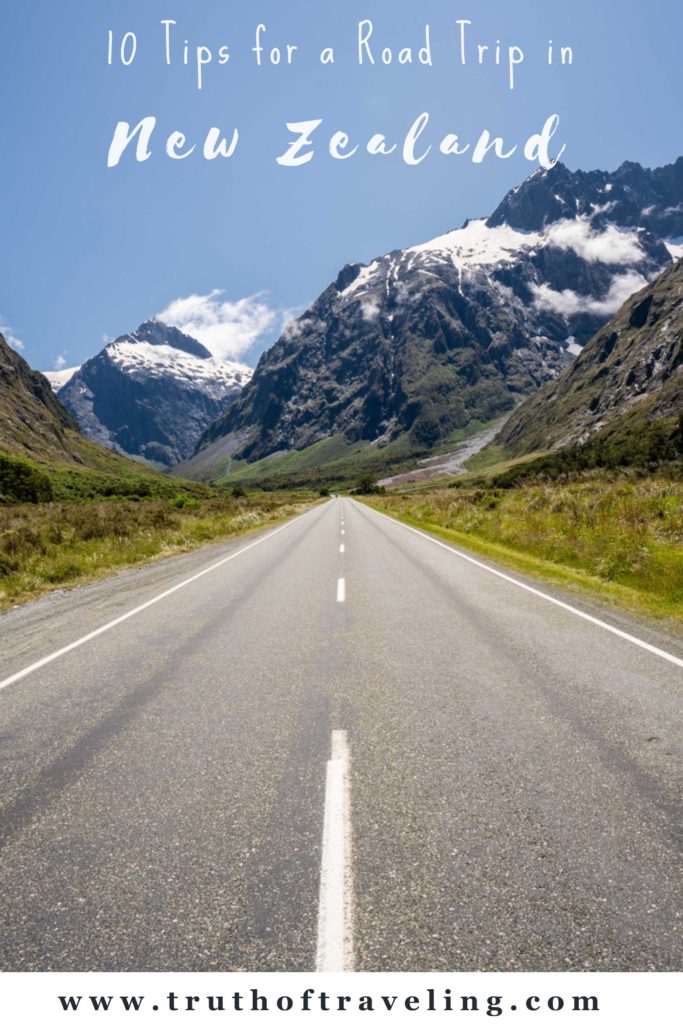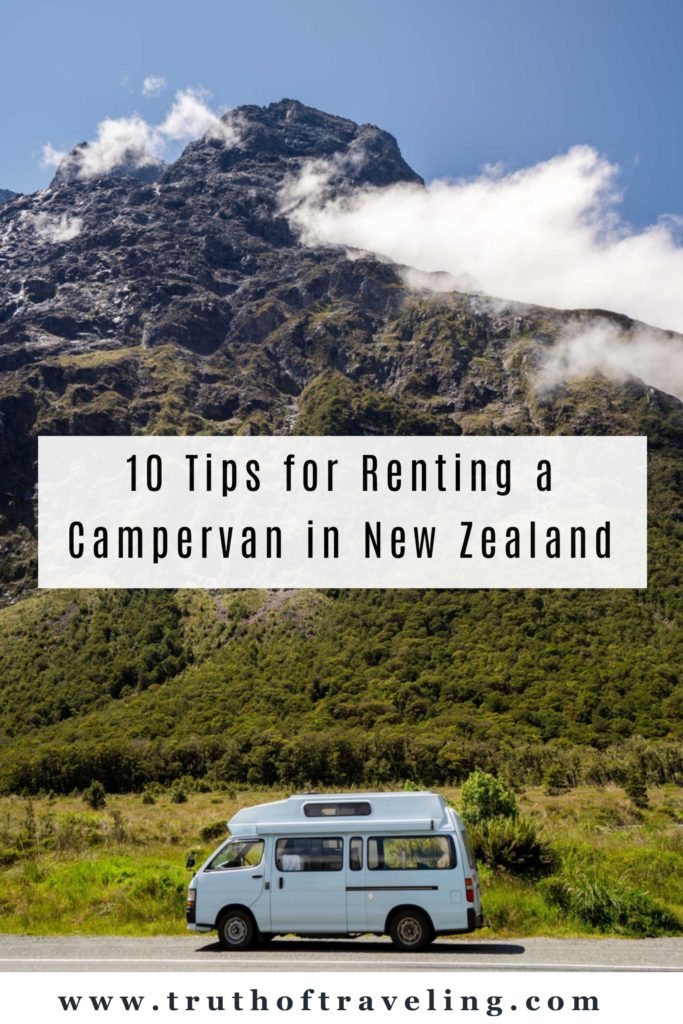Renting a campervan in New Zealand is the absolute best way to see this beautiful country! So many of the incredible things we saw were places where we pulled over on the side of the road or places we didn’t even know the name of. There is a large campervan and camping culture that there are campsites everywhere with all kinds of amenities. Here are our 10 tips for renting a campervan in New Zealand so you’re completely prepared for this amazing experience!
*Disclosure: This post contains Amazon affiliate links. As an Amazon Associate we earn from qualifying purchases. This means at no additional cost to you, we will earn a commission if you click through a link and make a purchase. This post may also contain other affiliate links and non-affiliate links to products and websites.
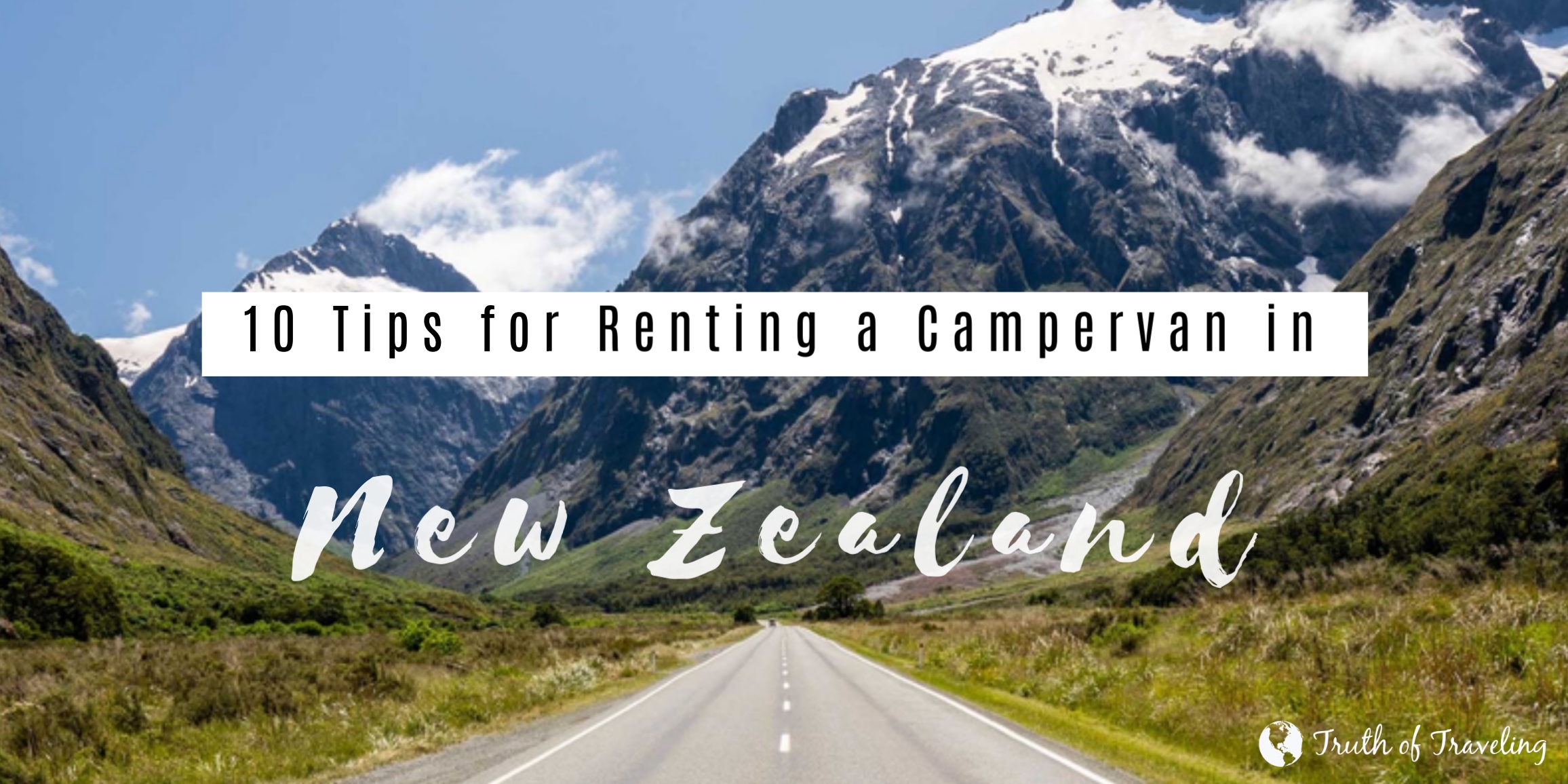
1. Do Your Research on Campervan Companies
There are so many campervan rental companies to chose from on the South Island of New Zealand. Do your research before just picking the cheapest price or largest van. Make sure there are some positive reviews for the company you are choosing in terms of vehicle quality and amenities. Some of the roads you will be driving on can get pretty remote so the last thing you want is to be stranded somewhere because your van breaks down.
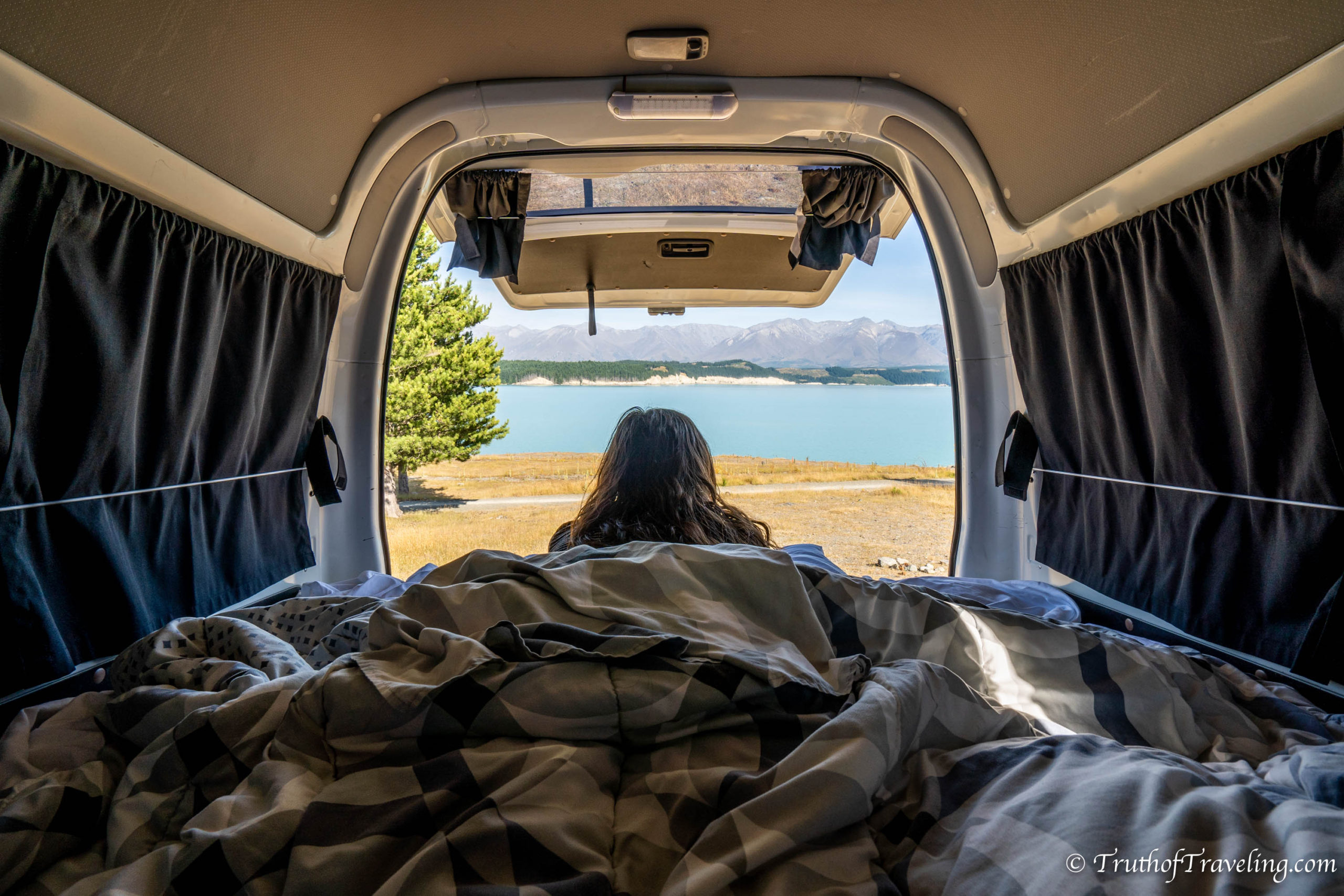
We rented from Road Runner Rentals in Christchurch and had a really positive experience! We were able to book online and received an email confirmation quickly after booking. When we picked up the van we went through everything inside and exactly how it all works so we left feeling really confident to get on the road!
- Drivenow and motorhomerepublic are two websites that pull rentals from a variety of companies. Either of those are good places to start to see what you can get for your budget.
Read More: Ultimate 2 Week Itinerary for the South Island of New Zealand
2. Do I Want Self Contained or non Self Contained?
Self Contained is a phrase you need to know for camping in New Zealand. Self contained vehicles have a few things which enable passengers to travel for a few days without needing additional facilities for filling up water, dumping water, using the bathroom, etc. These vehicles need to have a freshwater tank, a grey water tank, a toilet and a few other small things. This means for around 3 days you can drink, wash dishes and cook with freshwater and then dispose of dirty water in a grey water tank. Self contained vehicles in New Zealand have a blue self contained certificate which displays that it has met the requirements and therefore can camp at campsites designed for self contained vehicles only.
- A lot of self contained campervans also have solar panels or a secondary battery which gives you the ability to power items such as a fridge as well as charge things like your phone or computer in the van.
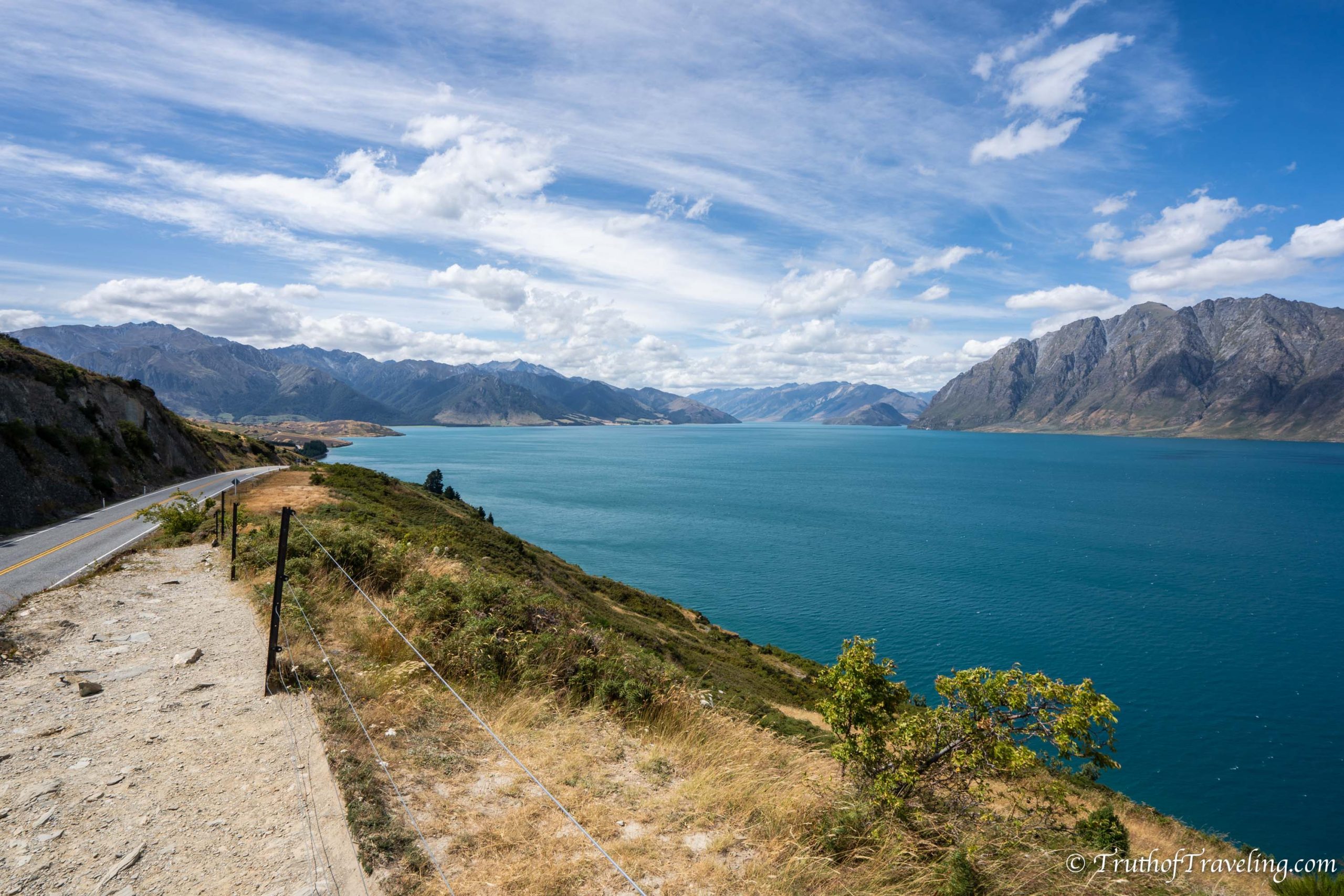
A vehicle that is not self contained just means that it does not have one of those items most likely a toilet or greywater tank. Self contained campervans are more expensive because they give you more amenities inside the van.
We originally booked a non self contained van but when picking up our van we got an upgrade to a fully self contained van. We got so incredibly lucky! After traveling around the island for 2 weeks and staying in all kinds of campsites getting a self contained campervan is worth the money! You can freedom camp, which means you can camp at campsites with little or no amenities (bathrooms, water, kitchens, etc.) which were some of the more remote and beautiful ones we stayed at!
- You either can spend a little more money on the actual campervan rental or a little more money on campsites throughout your trip because you’re more limited with where you can stay in some places. There is no right or wrong answer it all depends on what you will be most comfortable with! Some of our favorite campsites were ones that only allowed certified self contained campervans!
Read More: Guide to Visiting Milford Sound in New Zealand
3. Plan Your Route and then Double Your Time
Make sure when you are planning your route around the South Island to look up driving distances between everywhere you want to go. Then when you think you’ve mapped it all out go ahead and give yourself extra time for every single drive! There are so many lookout points, pull offs, and unexpected spots that you will want to stop at that will inevitably make your driving times longer.
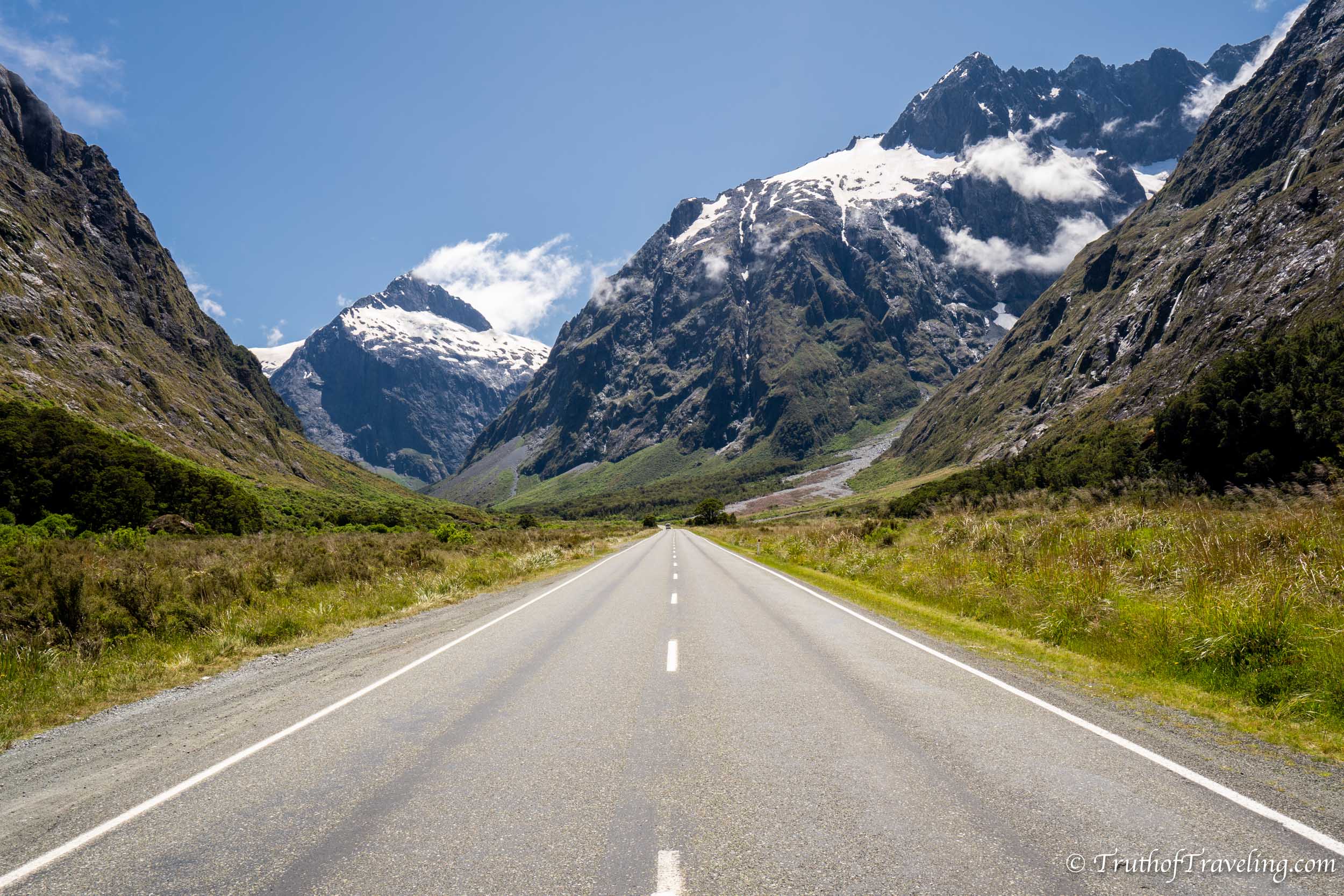
Part of the adventure in New Zealand is appreciating the scenery and everything you’re seeing while you’re driving not just the end destinations. We seriously didn’t have an ugly drive and we ended up loving being able to slow down and make stops whenever we wanted. There is nothing worse then having to rush and skip places when you really just want to pull over!
4. Make Sure You Have These Things!
There are a few things that are going to make you so much more comfortable in your campervan!
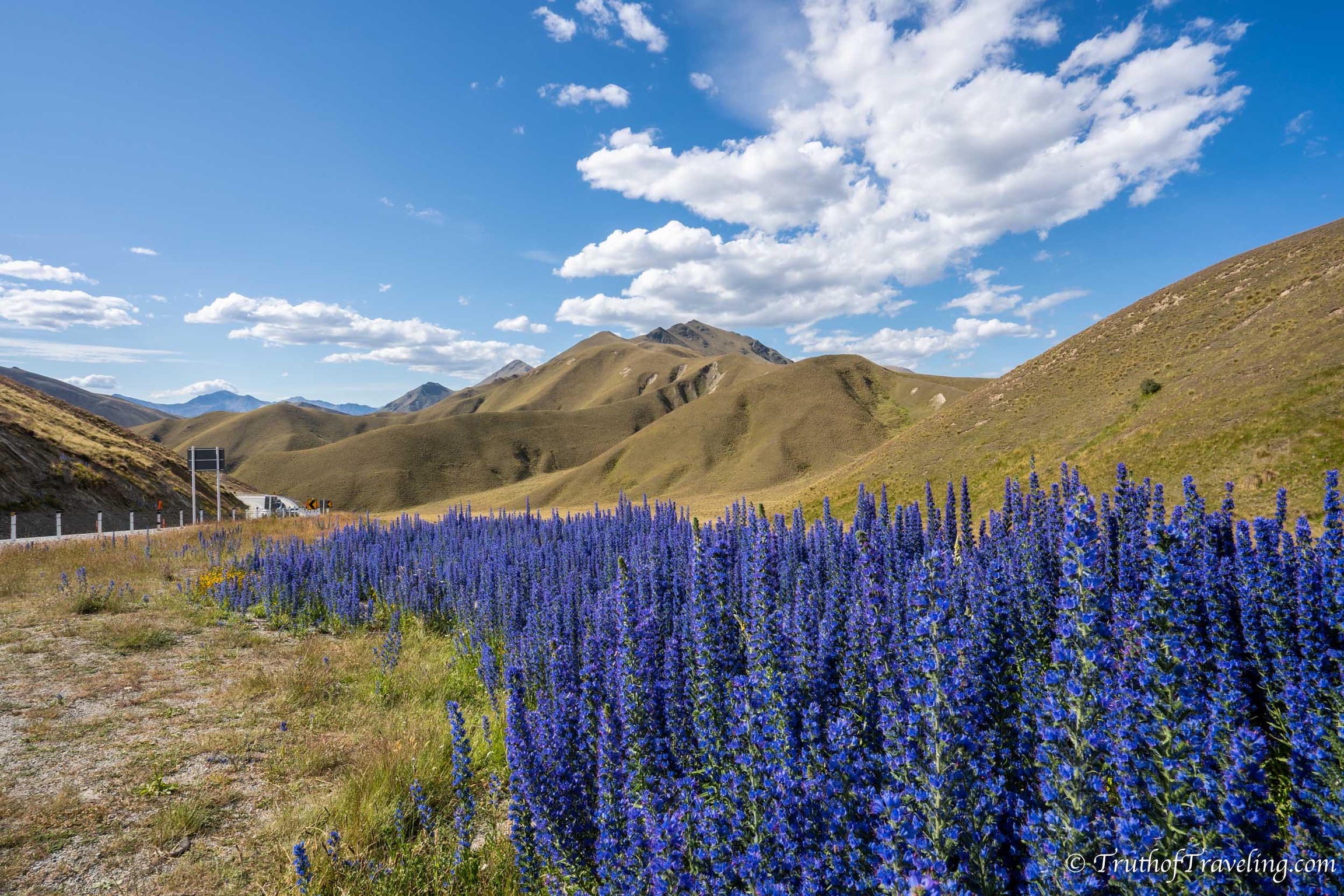
- Car Charger: This is going to be essential for your road trip! While you drive you can take advantage and charge two items. That way you don’t even need to use the solar panels or secondary battery. This one works so well and allowed us to charge our phones (or anything with a USB-A) and our MacBooks while driving!
- Headlamp: Even if you have lights in your van you are going to want to have a headlamp. You could use your phone flashlight but if you phone dies then you’re left in the dark. We used these while walking back later at night from the toilets or even inside the van to find things. A headlamp is so much easier to use while going to the bathroom than holding your phone and praying you don’t drop it in the toilet!
- Toilet Paper: While we’re talking about toilets, go ahead and buy a pack of toilet paper when you pick up your campervan! Some of the campsites we stayed in had some but others didn’t and it was nice to never worry about being stranded. Better to be safe than sorry! We also never used the toilet that was in our campervan. It honestly was more of an emergency option.
- Bug Spray: At night (especially down by Milford Sound) the sandflies and bugs can be quite bad. You’re going to want to have bug spray to fend them off as best as you can. We really like these wipes because they are so easy to apply without spraying the entire van with bug fumes. Plus they also don’t count as a liquid when flying and are so small!
Read More: Top 5 Campsites to Visit while Traveling the Sound Island of New Zealand
5. Download the CamperMate App
The CamperMate App is how we found every single campsite throughout our 2 weeks on the South Island. The app is free and so easy to use! You can filter for campgrounds either for self contained or non self contained vehicles as well as things such as ATMs, public toilets, wifi, water and so much more! Once you click on a specific campsite you can get GPS coordinates to get you there, information about how much it costs (if it’s paid), a list of amenities as well as reviews from people who have stayed there.

- On the map purple are paid campgrounds, blue are low cost campgrounds and green are free campgrounds.
Make sure before you leave to download the offline map within the app for the area you will be going or you can download them all like we did. That way if you don’t have service or wifi you can still look up campsites along the way!
Read More: Complete Guide: 7 Days on the North Island of New Zealand
6. There Are So Many One Way Bridges
There are so many one way bridges throughout New Zealand you are bound to go over quite a few. Before approaching the bridge will be a sign with two arrows indicating which direction has the right of way. The larger, more dominate arrow is the direction that has the right of way and the smaller arrow is supposed to give way or yield to oncoming traffic. Once you see one or two you will get used to how it works!
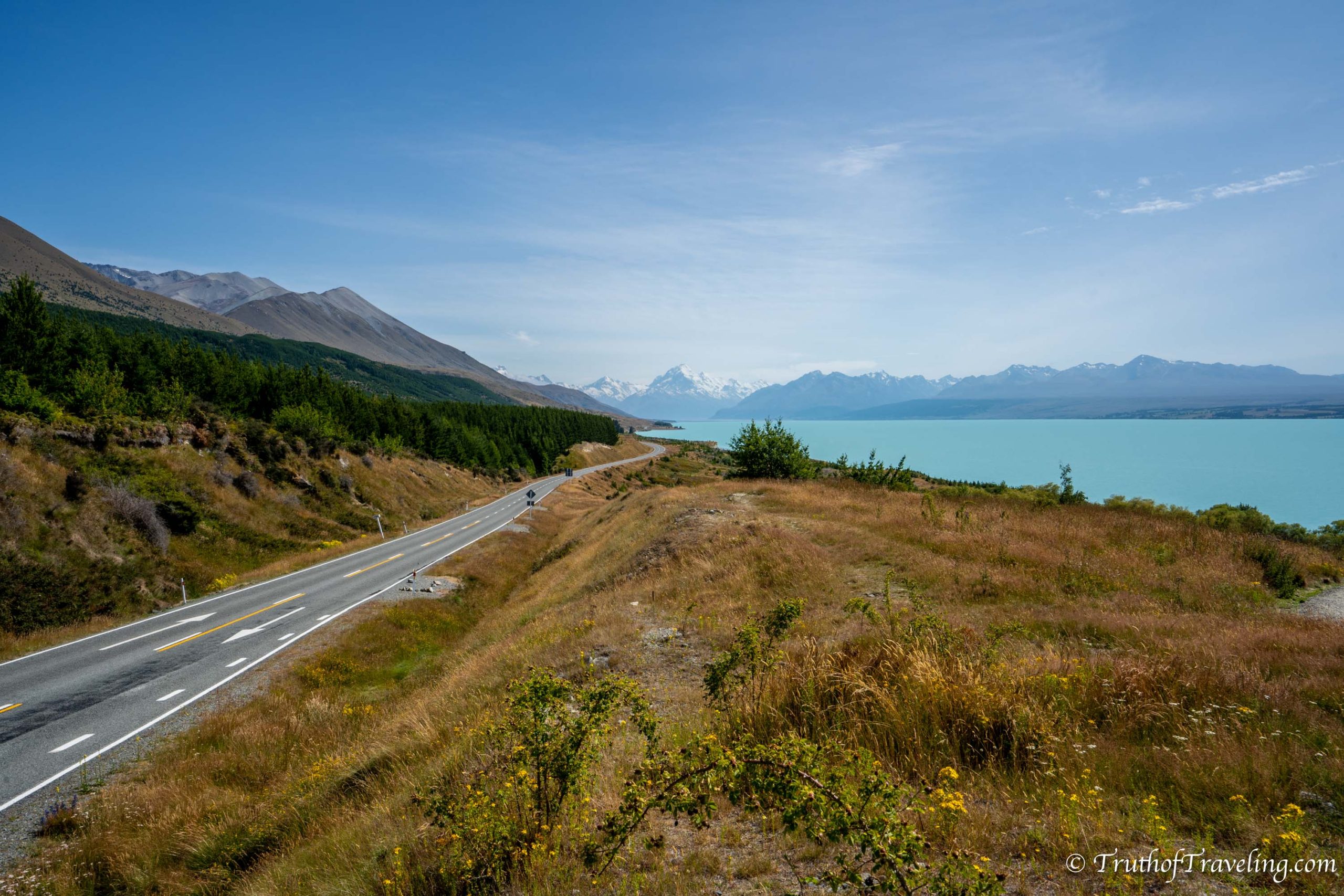
- Make sure to approach with caution even if your direction has the right of way. If it’s around a curve you never know if the oncoming traffic saw you approaching.
- Every time we crossed one of these with cars coming in the other direction everyone was very friendly and cautious.
Read More: Ultimate Australian Road Trip- Cairns to Brisbane
7. Stock up on Groceries at Pak ‘n Save
Depending on your route you might find yourself in more remote places where your options for things like groceries, restaurants and even gas are limited. We made sure to stock up on grocery items at Pak ‘n Save before we left Christchurch. That way we knew we had everything we needed for the next couple of days.
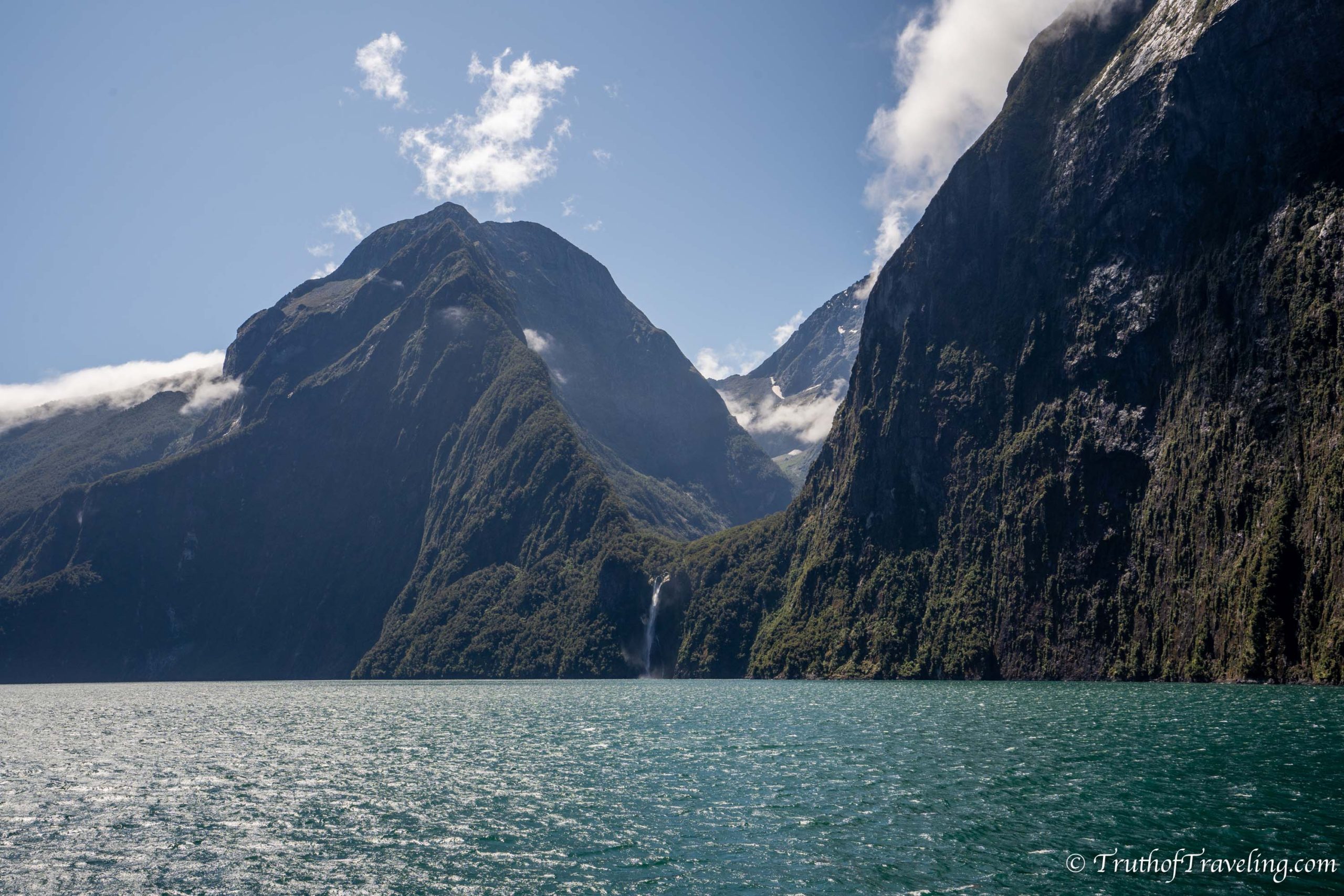
Then we restocked again at Pak ‘n Save in Queenstown. There are other grocery stores but we found these to be decently priced, large and had a lot of variety. The car parks are also usually very large and can accommodate campervans. Pak ‘n Save also usually has gas in the same parking lot so you can do both in one place which is convenient.
If you’re looking for any items for your van the Warehouse is similar to a Walmart or Kmart. It has clothing as well as home items where you can find things like flipflops, camp chairs or anything else you might need during your road trip!
8. Generally Roads are 100 km/h
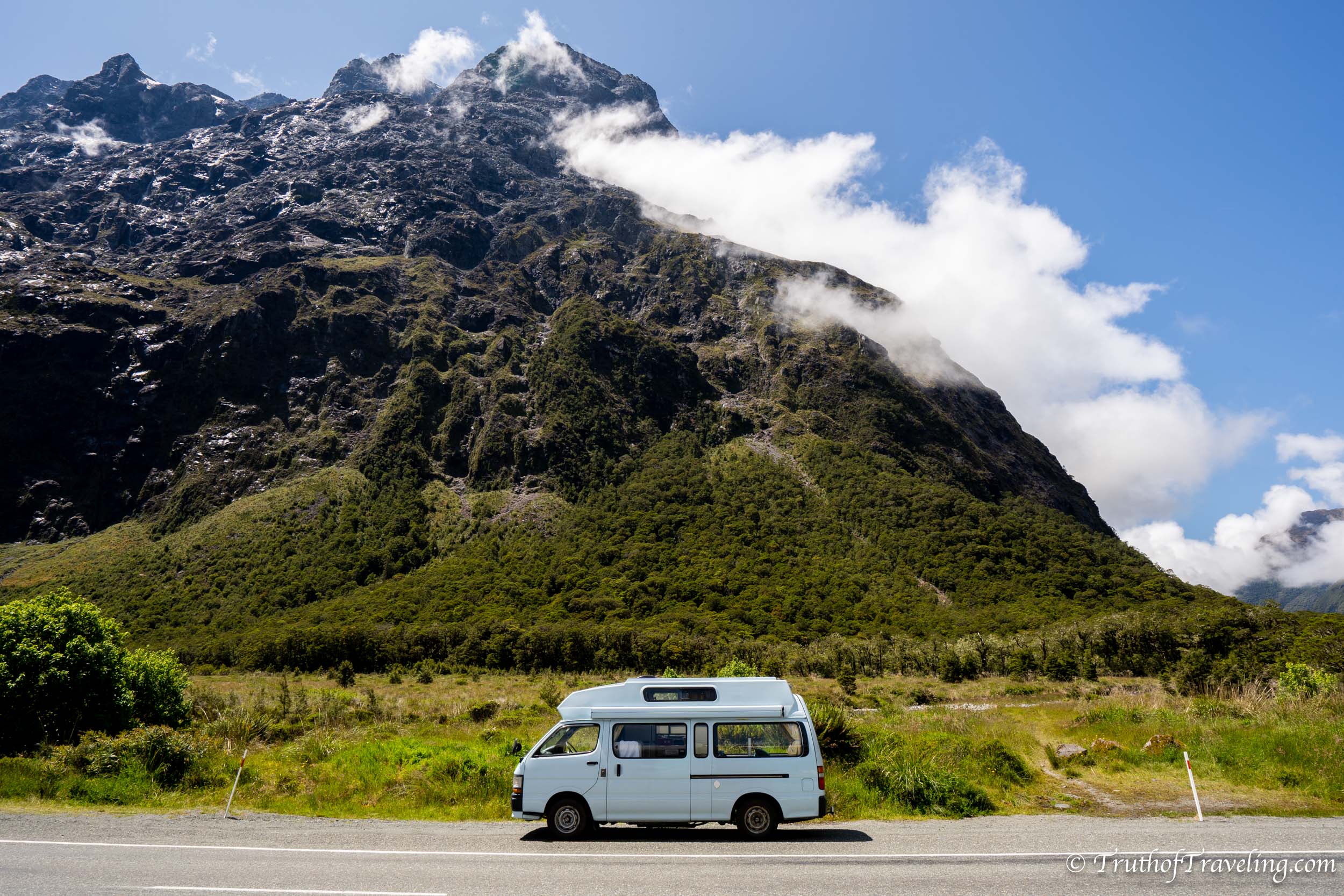
Almost all roads in New Zealand follow a speed pattern. Most roads are 100 kilometers per hour. Then it drops down to 70 kilometers as you approach a town. As you drive through the town the speed drops again to 50 kilometers. Then as you exit the town it increases to 70 and then back up to 100. It is always indicated but it’s a pattern you will come to know very well and be able to anticipate!
- A lot of roads in New Zealand also allow cars to pass slower moving cars.
Read More: Complete 3 Day Guide to Driving the Great Ocean Road
9. There is a lot of road construction!
One thing we encountered a lot was road construction while exploring the South Island. There were tons of points where they were resealing the road or doing repairs which brought the road down to one lane. For this there is a sign indicating vehicles queued ahead and then either a stop light or a person holding a stop/go sign. One direction goes while the other waits and then vice versa.
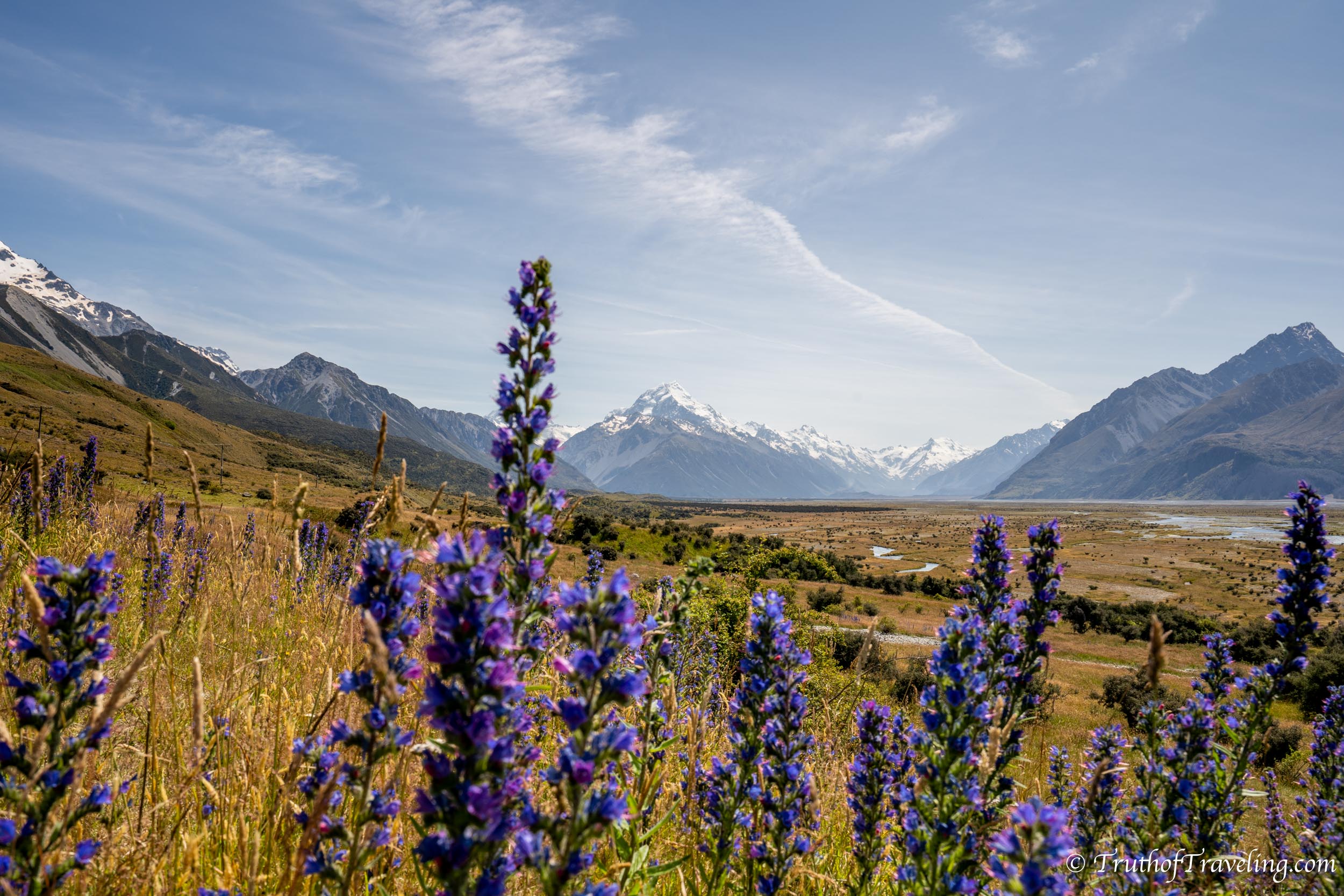
- We never waited too long so it wasn’t that inconvenient.
- But if you see a vehicles queued ahead sign it’s good to know you will have to stop soon especially if you’re in a bigger vehicle.
- Around road construction we found the speed limit dropped down to 30 kilometers an hour.
10. The Roads are Thin and Windy!
When you’re deciding what campervan to get keep in mind that a lot of the roads on the South Island of New Zealand are constantly winding and are pretty thin! Thats not to say everywhere but a lot of places we went were thin roads with large curves that required zigzagging usually along the mountains or the coastline.
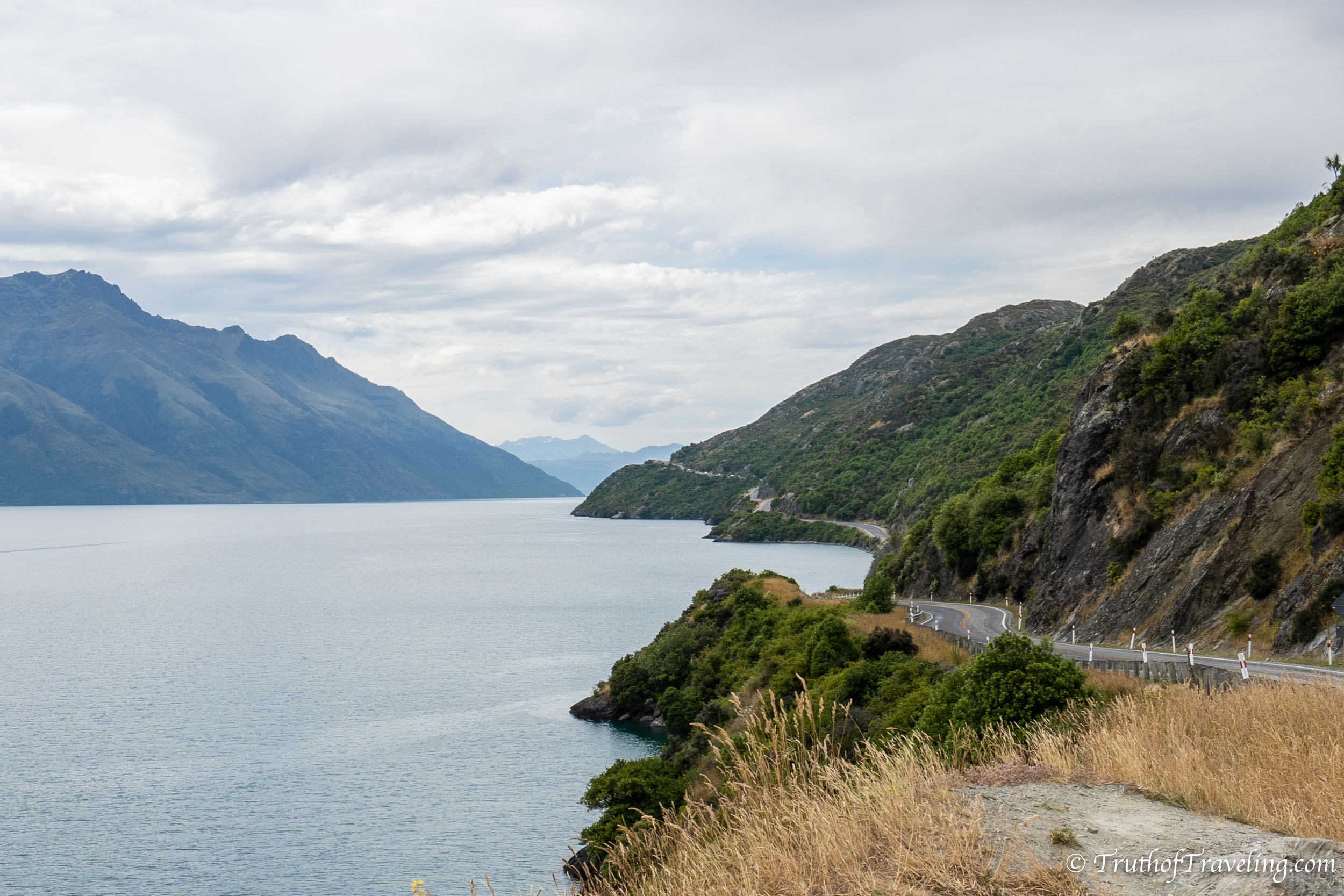
We were glad on some of these incredibly small roads to not have a really big motorhome but one of the smaller campervans. It was just easier to drive because it was a smaller vehicle. There are also a lot of gravel roads that are easier to get down in a smaller van. Make sure you will be comfortable driving whatever campervan you choose!
Interested in More Posts About New Zealand? Read Here!
Pin it for later:
